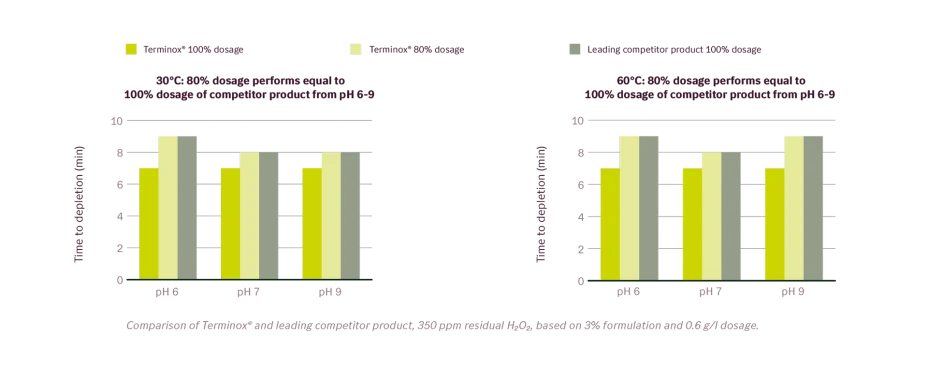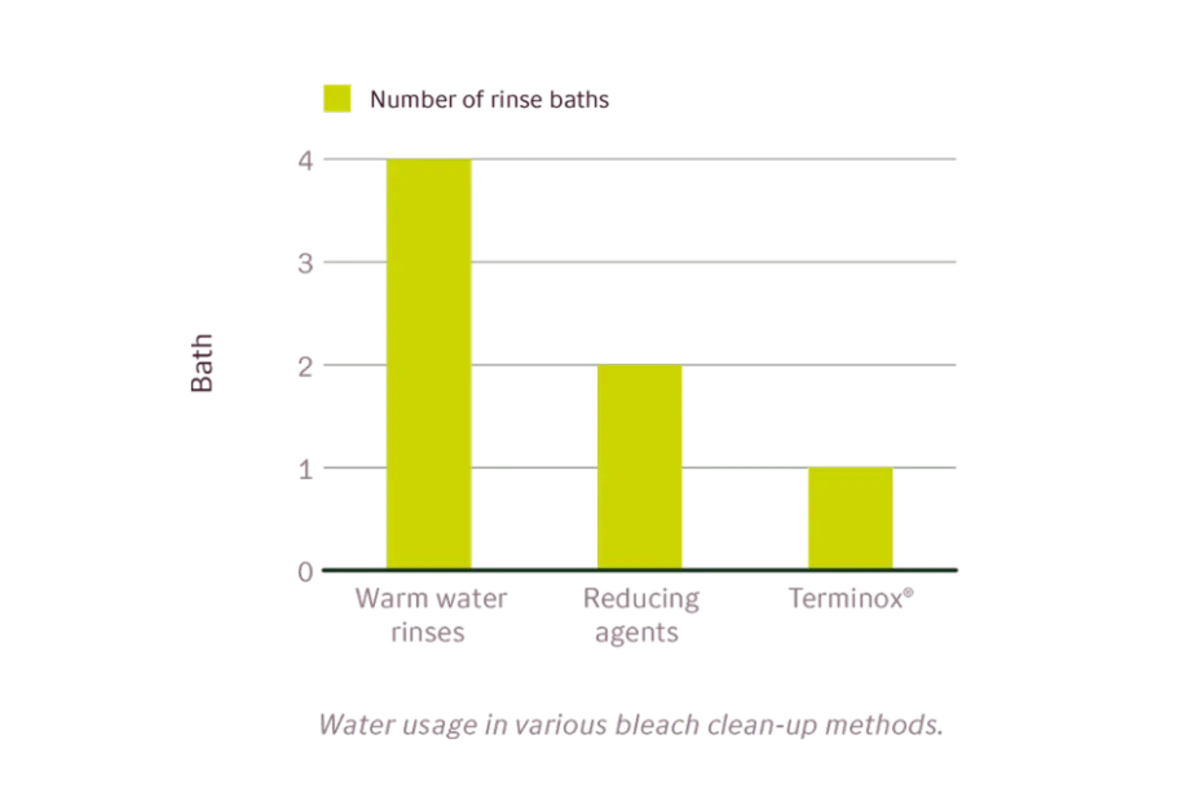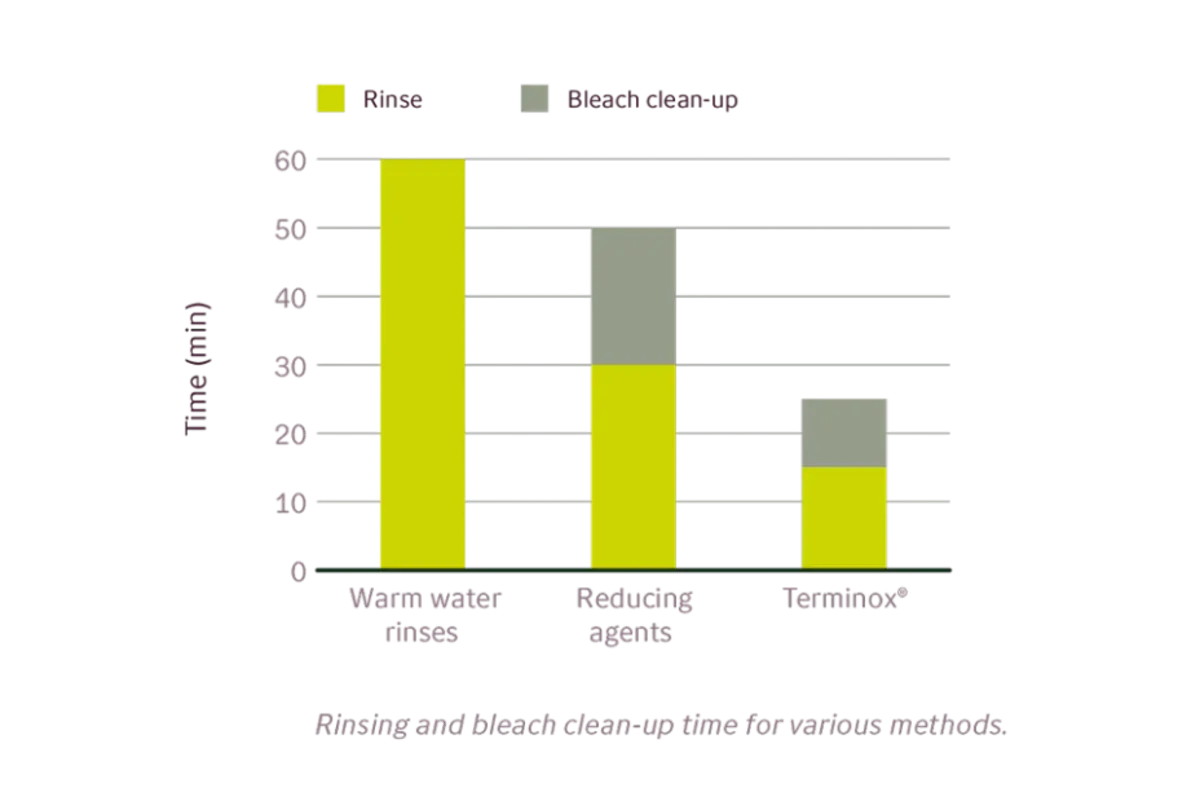Save between one and three rinse baths
Depending on your process, Terminox® products could save you between one and three water baths. That leads to water and energy savings.

Depending on your process, Terminox® products could save you between one and three water baths. That leads to water and energy savings.

Depending on your process, Terminox® products could save you up to 30 minutes.

Residual bleach in fabric can prevent dyeing reproducibility. Catalases split hydrogen peroxide into water and oxygen. That makes them a fast, cost-effective alternative to water or reducing agents.
For consistent batch-to-batch dyeing reproducibility, each batch needs the same starting point. Textile mills achieve this by bleaching the fabric with hydrogen peroxide (H2O2) in advance. But any residual bleach will impact dyeing reproducibility. So it's just as important to 'clean up' all residual hydrogen peroxide in a bleach clean-up process.
Conventional methods of bleach clean-up include reducing agents or rinsing with vast amounts of water. Both methods can leave residual bleach or reducing agents such as sodium thiosulphate in the fabric. These will affect dyeing consistency.
Catalases simply split H2O2 into water (H2O) and oxygen (O2). That means there's no need for reducing agents or further rinses. Enzymes are also highly specific in their action, so any residual catalase won't affect the dyeing process or fabric.